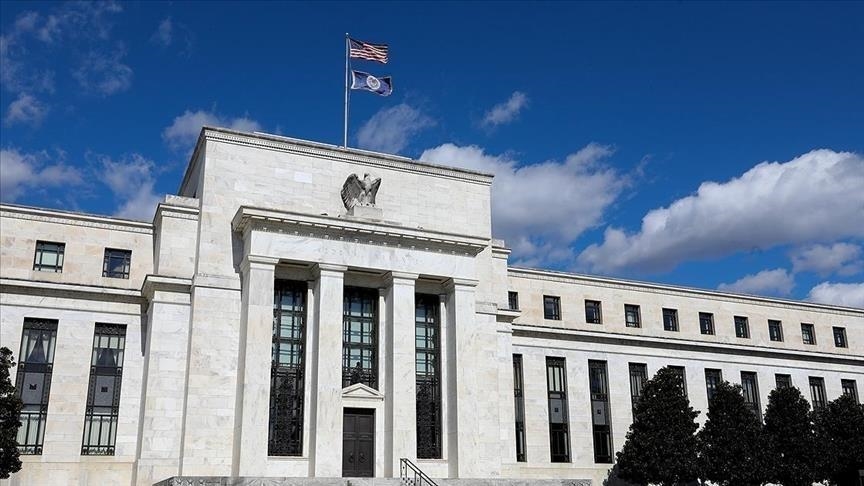– Main source of US inflation at this stage is shelter, while energy prices will likely act disinflationary in coming months, Wurm tells Anadolu
ISTANBUL
Inflation in the US is expected to come close to the Federal Reserve’s 2% target in the coming months as shelter and energy inflation will slow, according to an expert.
“While producer prices rose in April, driven by service cost, consumer prices decelerated about as expected, although recent progress does not match that of late 2023,” Martin Wurm, a director at Moody’s Analytics, told Anadolu.
Consumer inflation annually rose 3.4% in April and monthly increased 0.3%, both slowing down from March figures of 3.5% and 0.4%, respectively, according to the latest figures announced last month.
Producer inflation in April, however, rose 2.2% annually and accelerated from March when it increased 1.8% year-on-year.
The consumer price index (CPI) for May will be announced Wednesday at 8.30 a.m. EDT, just hours before the Federal Open Market Committee (FOMC) will conclude their two-day meeting.
The Fed is widely expected to keep the federal funds rate unchanged on Wednesday at the 5.25%-5.5% target range, the highest level in 23 years.
To tame record inflation, the Fed has made a total of 11 interest rate increases between March 2022 and July 2023, and it was expected to begin lowering interest rates in the first half of this year.
However, the stubbornly high inflation pushed hopes of the FOMC’s first rate cut decision further into this fall at the earliest.
“Since the Fed has signaled that policymakers need to see sufficient evidence that disinflation is sustained before considering cuts, we now expect the first 25-basis-point rate cut in September, followed by another cut in December,” said Wurm.
“Subsequently, the Fed will cut rates by about 25 basis points per quarter until the end of 2026.”
The probability of a Fed rate cut of 25 basis points at the central bank’s two-day meeting that will conclude on Sept. 18 stood at 46.7% on Monday, according to the FedWatch Tool provided by the US-based Chicago Mercantile Exchange Group.
After last Friday’s hot jobs market report, however, the probability of keeping the benchmark interest rate unchanged at that meeting was higher than a rate cut, at 49.2%.
The American economy added 272,000 jobs in May, much more than market estimates of 182,000, and the hot labor market reignited fears that the first rate cut could be delayed even further.
‘Shelter inflation to gradually decline’
“The index for shelter rose in April, as did the index for gasoline,” the US Labor Department said in its CPI report on May 15. The agency noted that these two indexes, combined, contributed over 70% of the monthly increase in the CPI for all items.
The shelter index annually jumped 5.5% in April on an unadjusted basis, according to the agency’s figures.
Wurm said the main source of US inflation at this stage is shelter, which has been slow to reflect declines in rent growth over the past year.
“Leading indicators, like Zillow’s observed rent index, had already decelerated from over 15% year-ago rent growth in 2022 to low single digits by last summer. This trend is reflected with significant lag in the official inflation statistics, which include estimated owner equivalent rent. Harmonized measures of inflation, which exclude this component, have been showing inflation roughly consistent with the Fed’s 2% target since late 2023,” he explained.
“While each measure has its problems, shelter inflation in the official CPI and PCE statistics will thus gradually decline in the coming months,” he added.
‘Energy likely to act disinflationary in coming months’
The energy index, meanwhile, increased 2.6% for the 12 months ending April, according to the Labor Department’s latest figures.
“Among the remaining concerns, energy prices are receding since oil prices peaked in early April and will likely act disinflationary in the coming months,” Wurm said.
“In a similar vein, remaining price pressures in service industries will fade as US labor markets have come more in balance, and wage growth, while still elevated, will slowly recede,” he added.
In May, average hourly earnings for all employees on private non-farm payrolls increased by 0.4% compared to April, according to Labor Department figures released Friday.
That figure showed an annual increase of 4.1% compared to the same month of 2023.
Those figures also accelerated from April, when average hourly earnings showed a monthly gain of 0.2% and increased 3.9% year-on-year.

